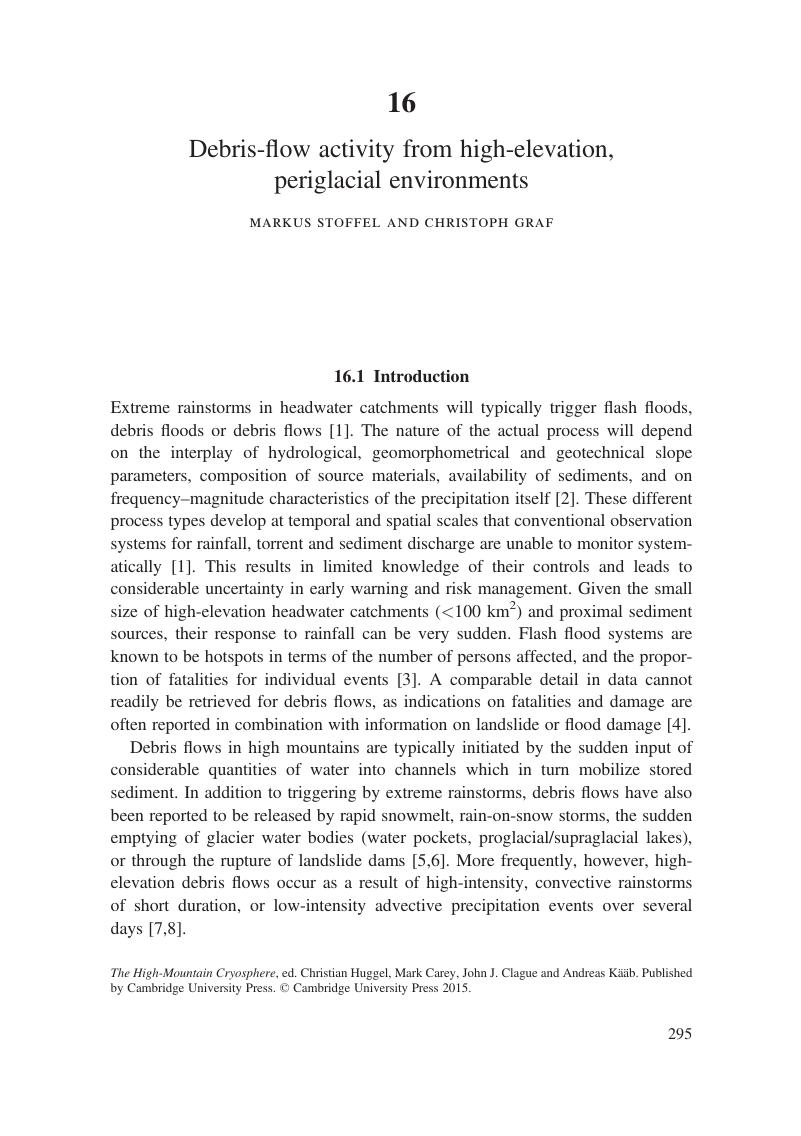Book contents
- The High-Mountain CryosphereEnvironmental Changes and Human Risks
- The High-Mountain Cryosphere
- Copyright page
- Contents
- Contributors
- Book part
- 1 Introduction
- Part I Global drivers
- Part II Processes
- Part III Consequences and responses
- 14 The honour of the snow-mountains is the snow
- 15 Ice-clad volcanoes
- 16 Debris-flow activity from high-elevation, periglacial environments
- 17 Contextualizing conflict
- Part IV Conclusions
- Index
- References
16 - Debris-flow activity from high-elevation, periglacial environments
from Part III - Consequences and responses
Published online by Cambridge University Press: 05 September 2015
- The High-Mountain CryosphereEnvironmental Changes and Human Risks
- The High-Mountain Cryosphere
- Copyright page
- Contents
- Contributors
- Book part
- 1 Introduction
- Part I Global drivers
- Part II Processes
- Part III Consequences and responses
- 14 The honour of the snow-mountains is the snow
- 15 Ice-clad volcanoes
- 16 Debris-flow activity from high-elevation, periglacial environments
- 17 Contextualizing conflict
- Part IV Conclusions
- Index
- References
Summary

- Type
- Chapter
- Information
- The High-Mountain CryosphereEnvironmental Changes and Human Risks, pp. 295 - 314Publisher: Cambridge University PressPrint publication year: 2015



